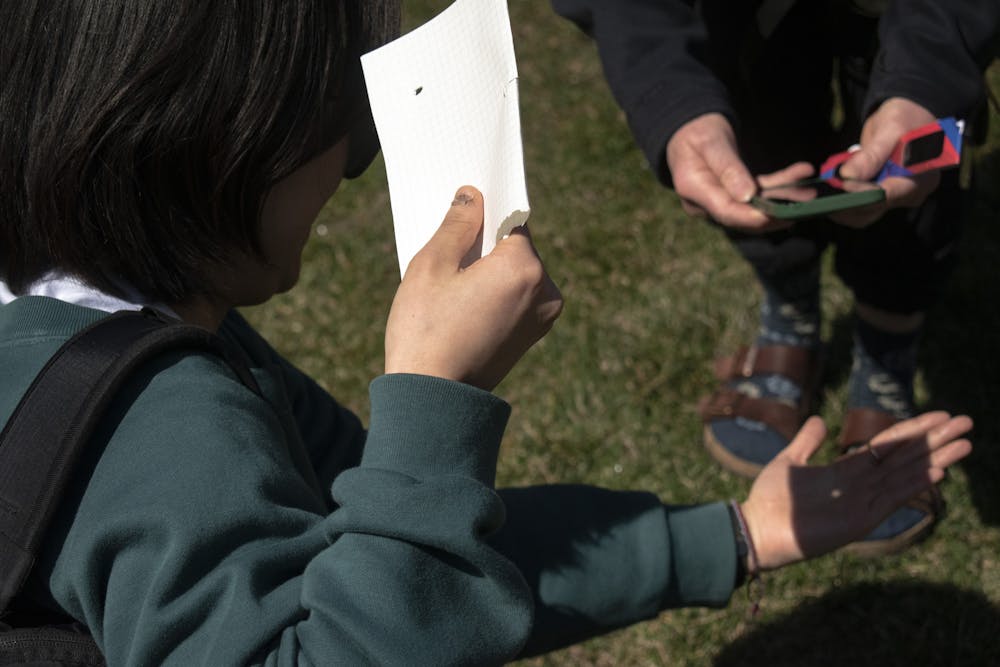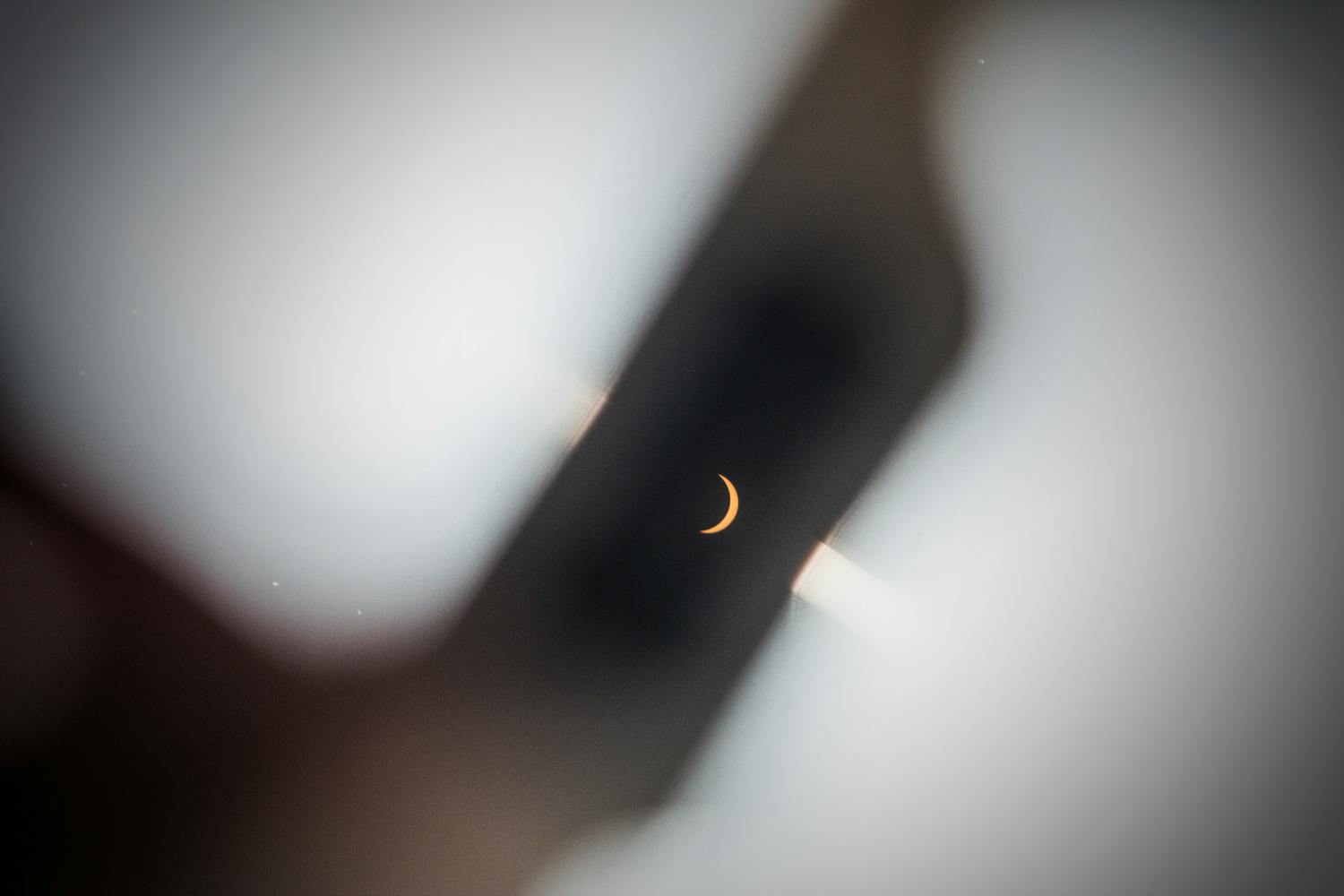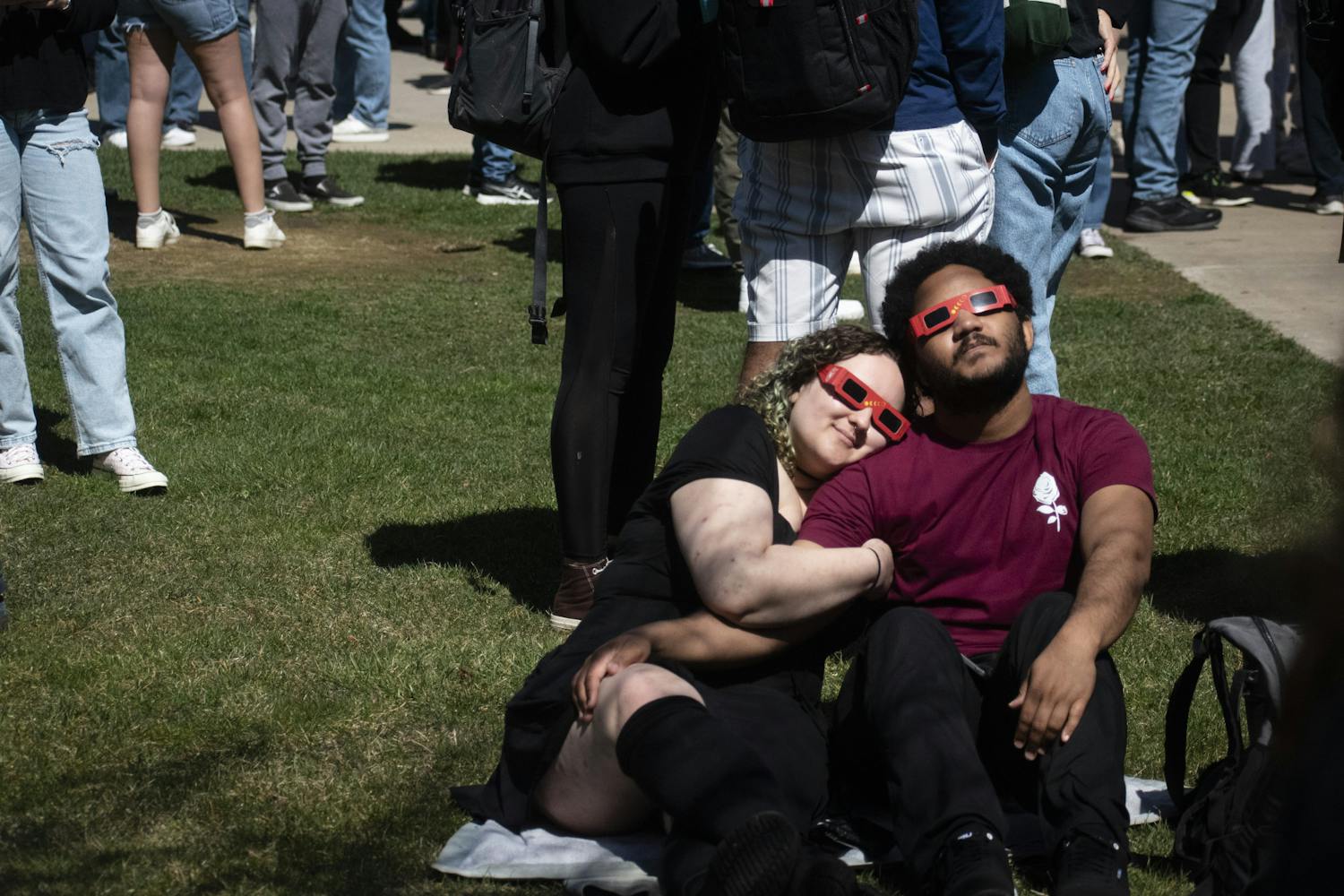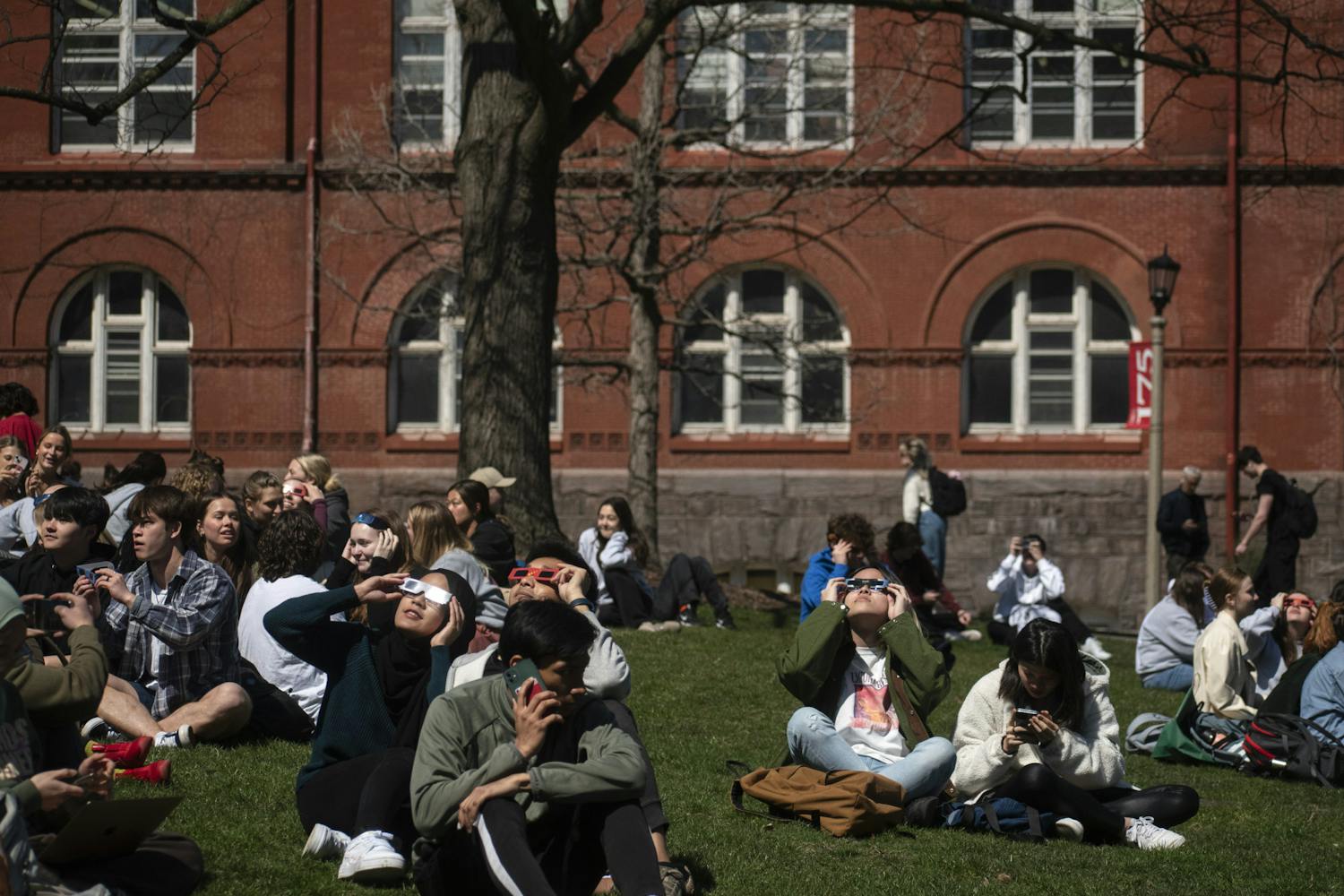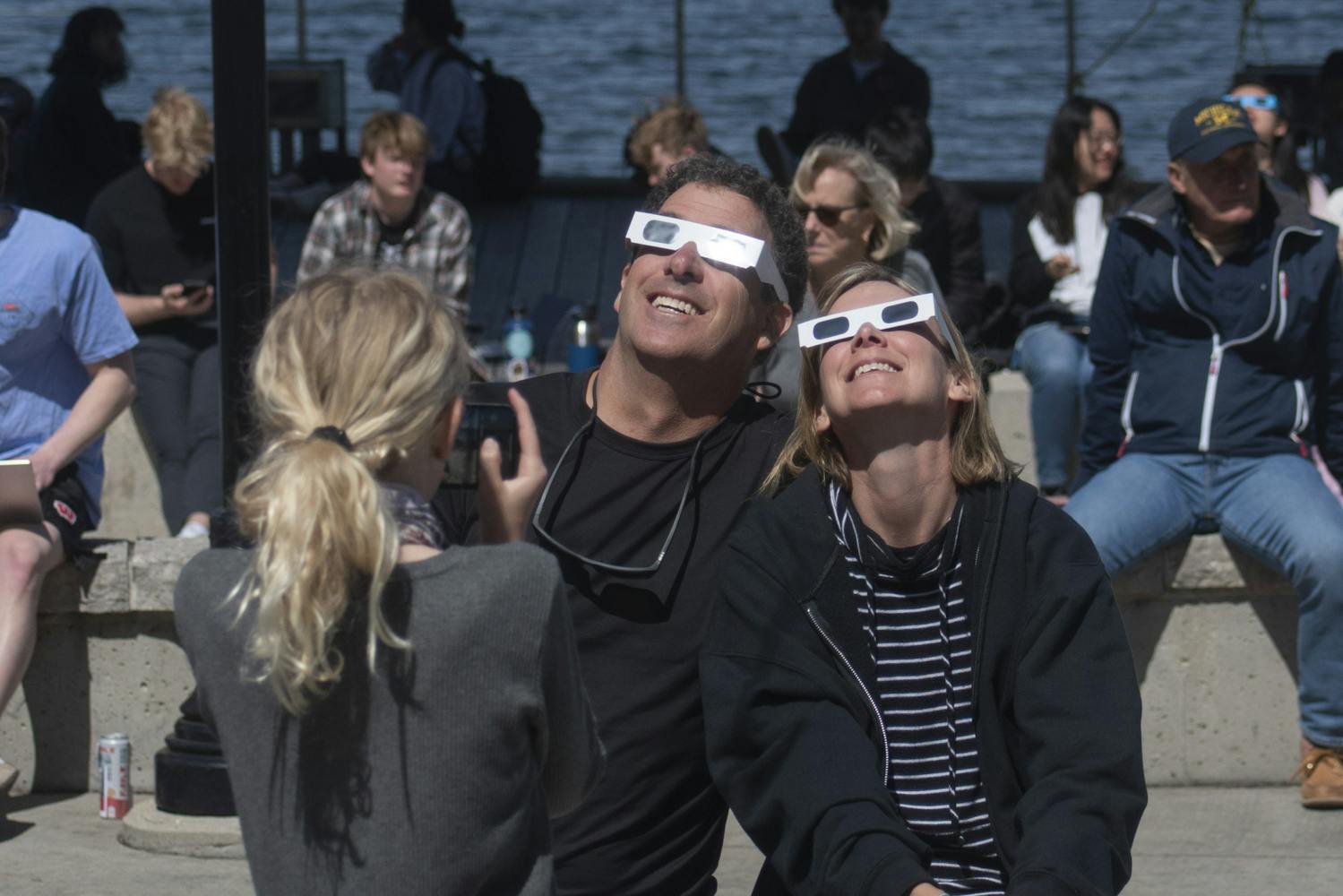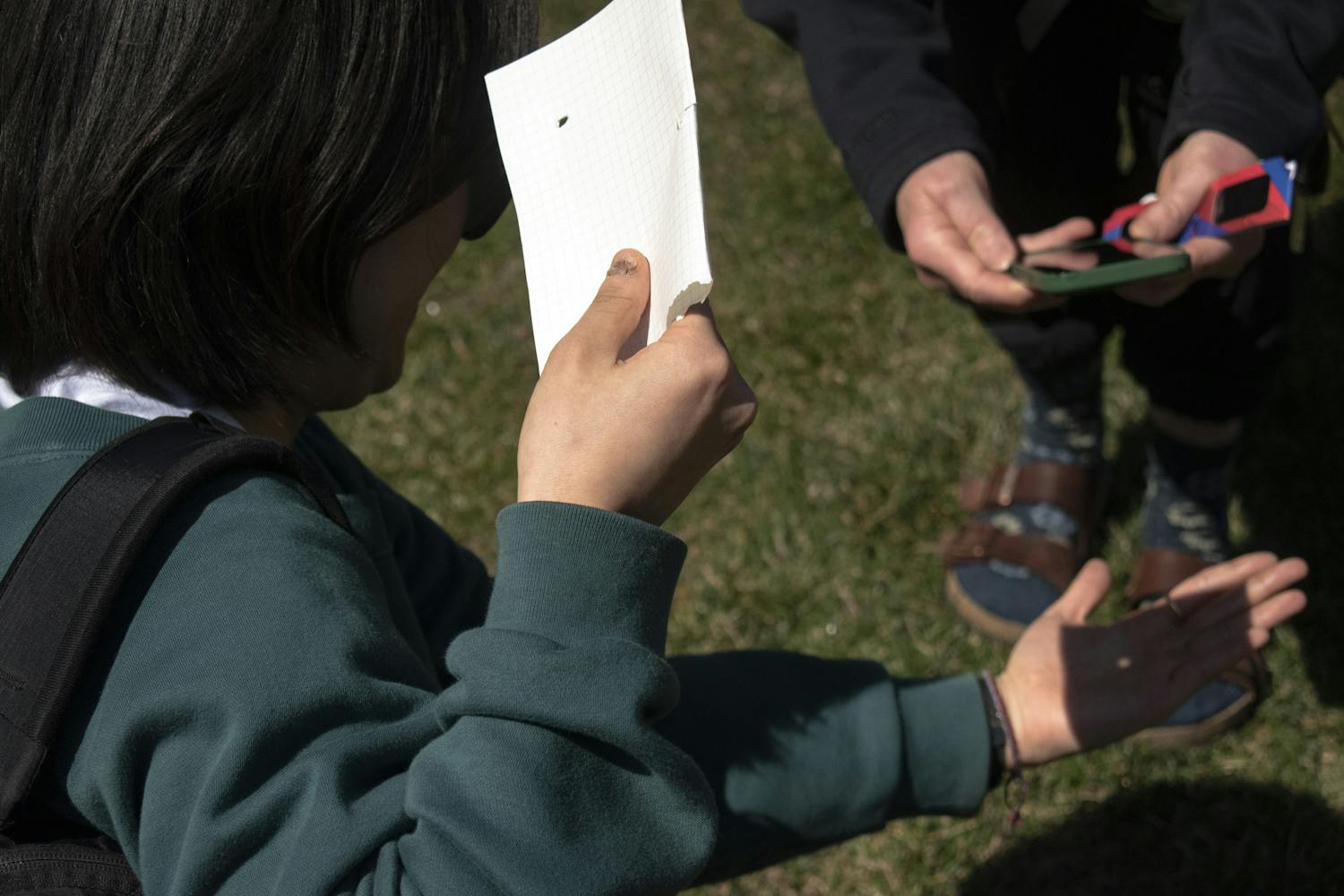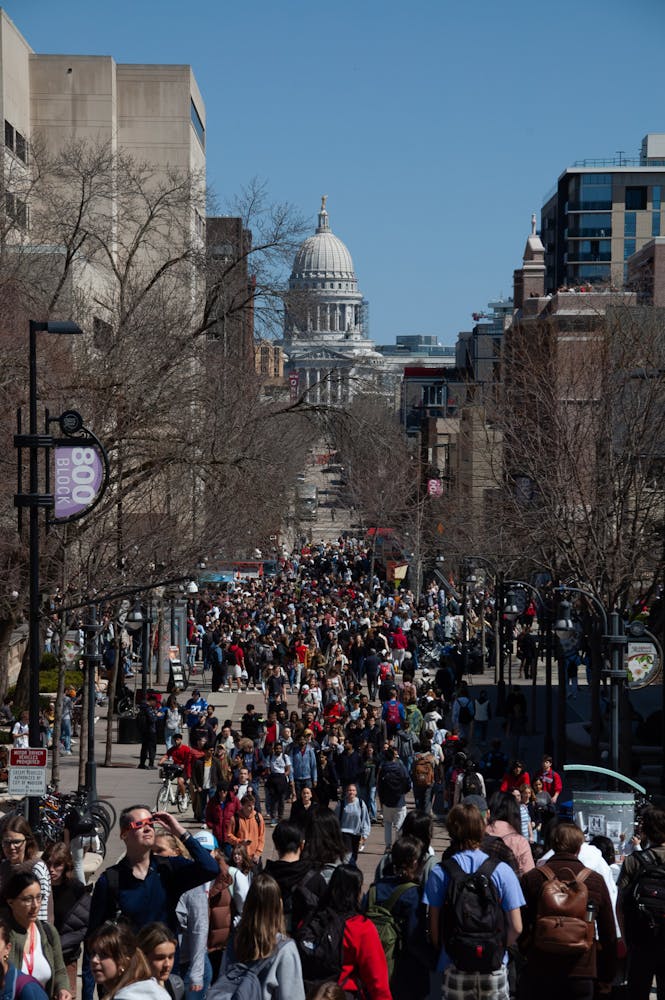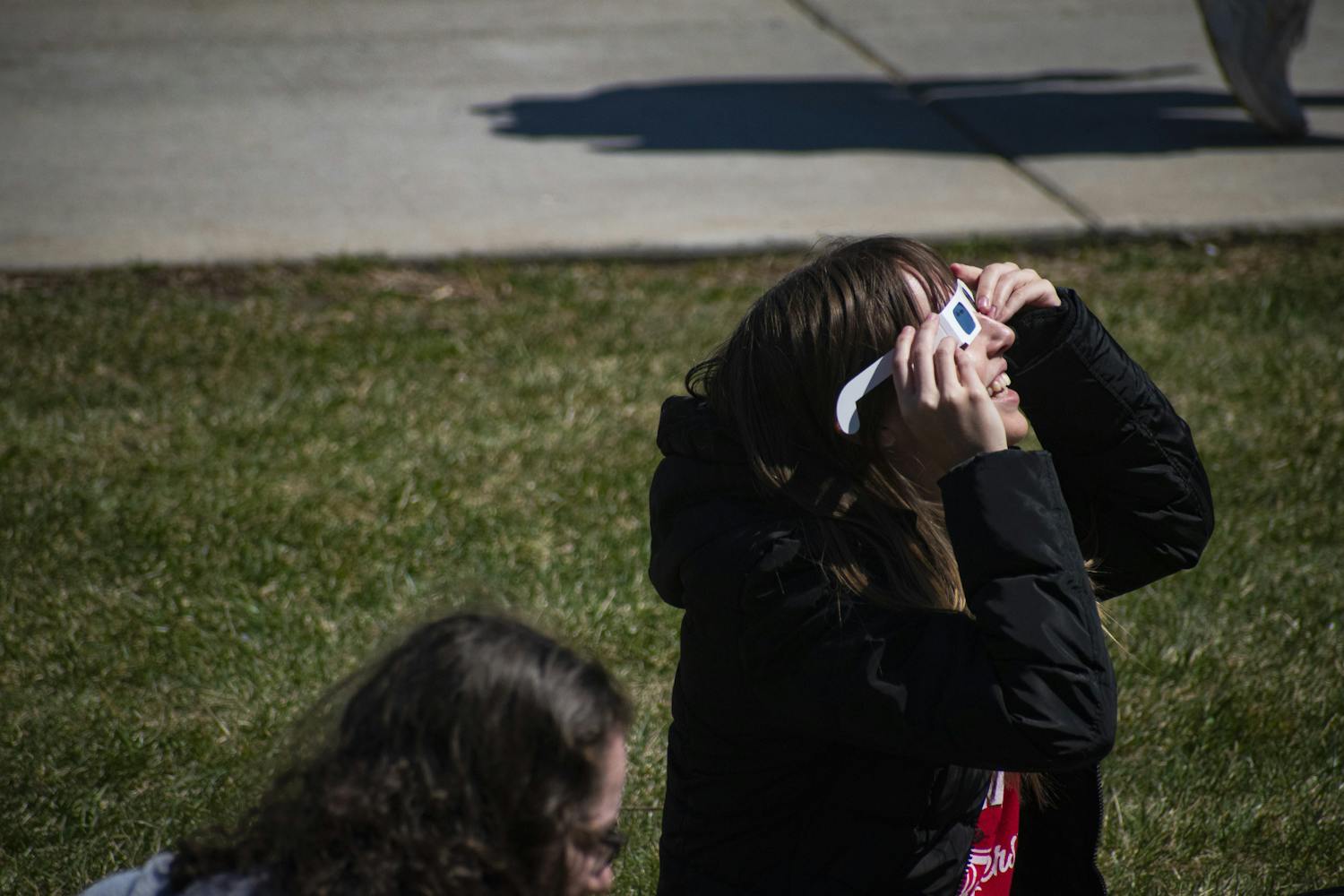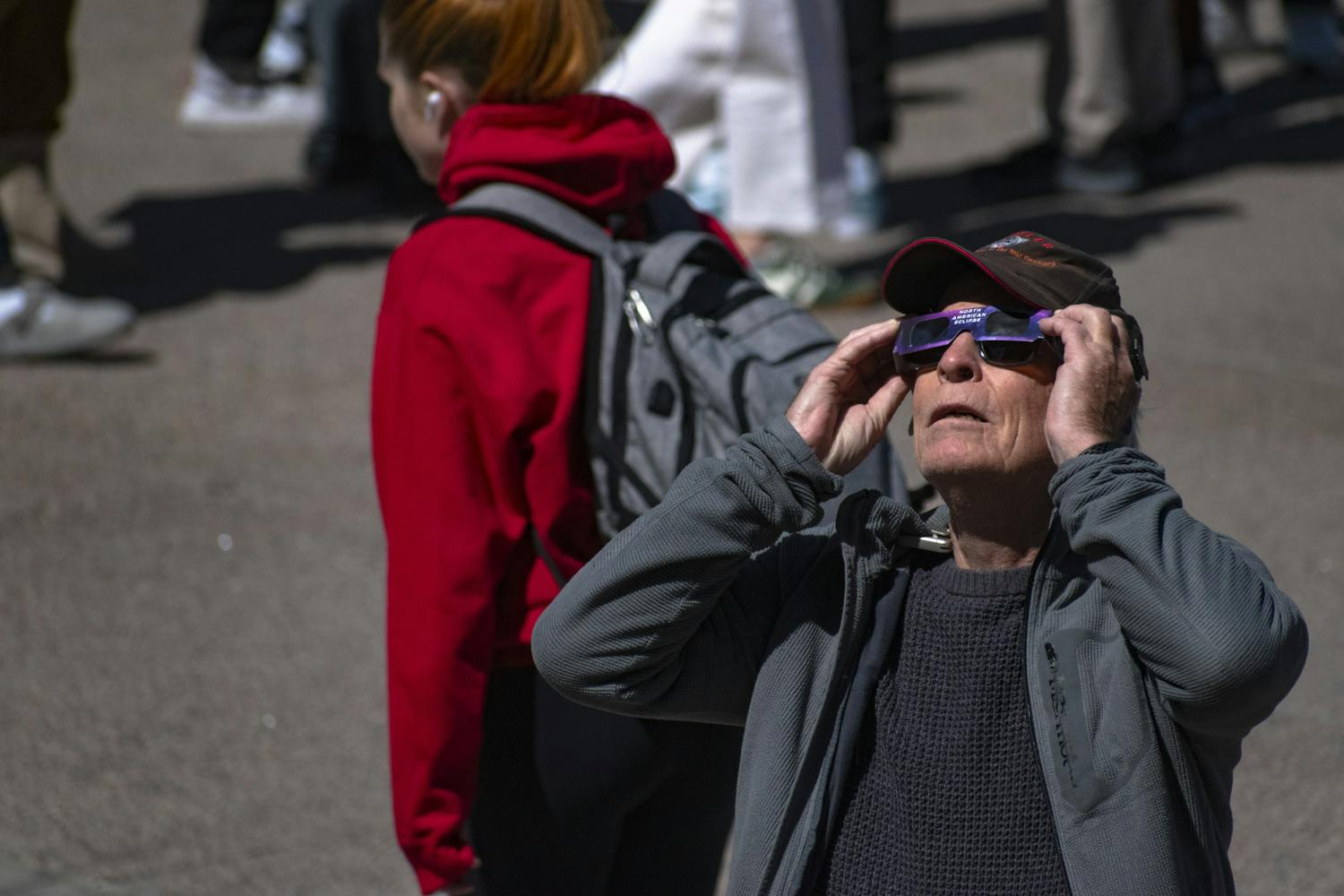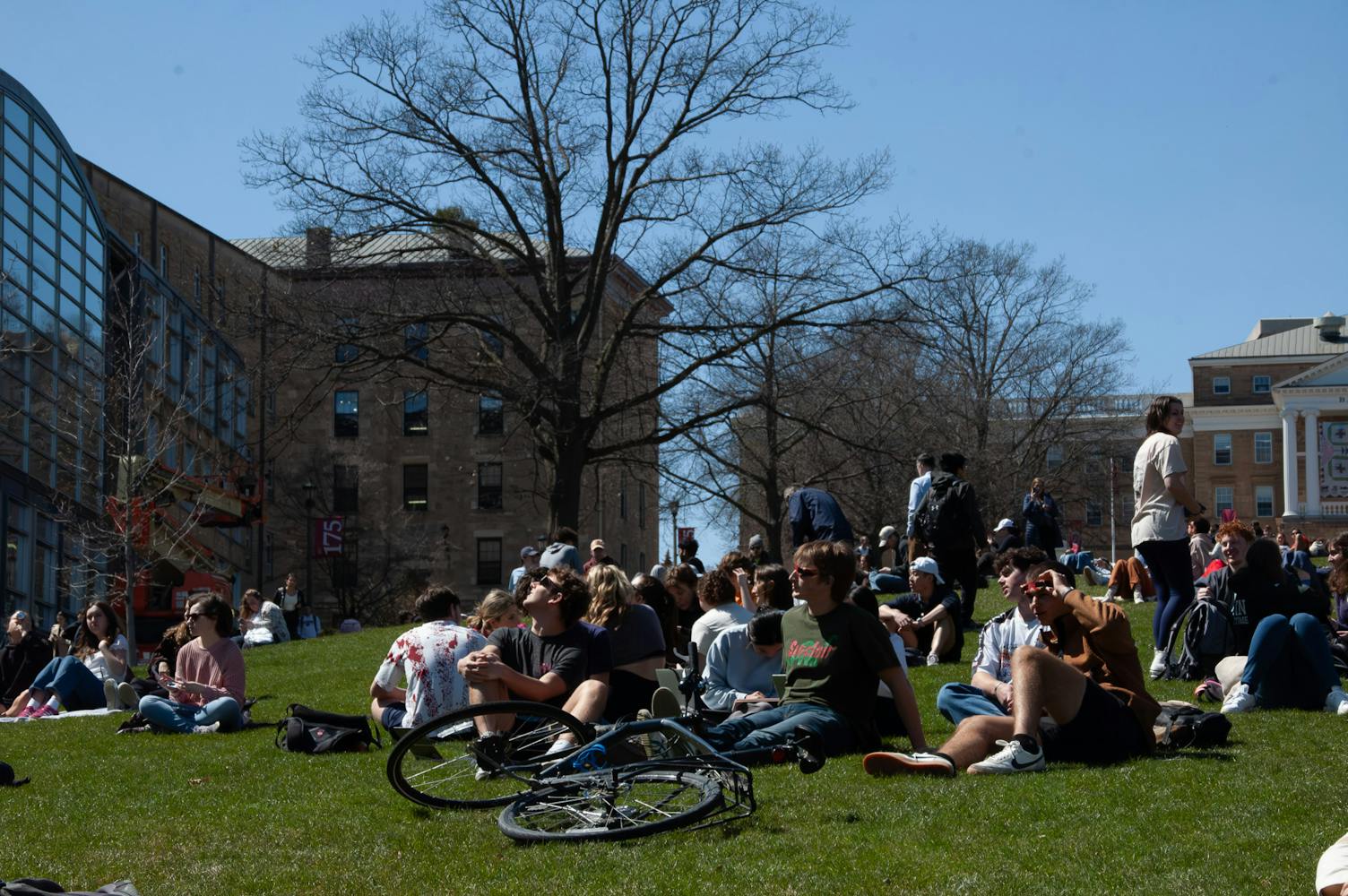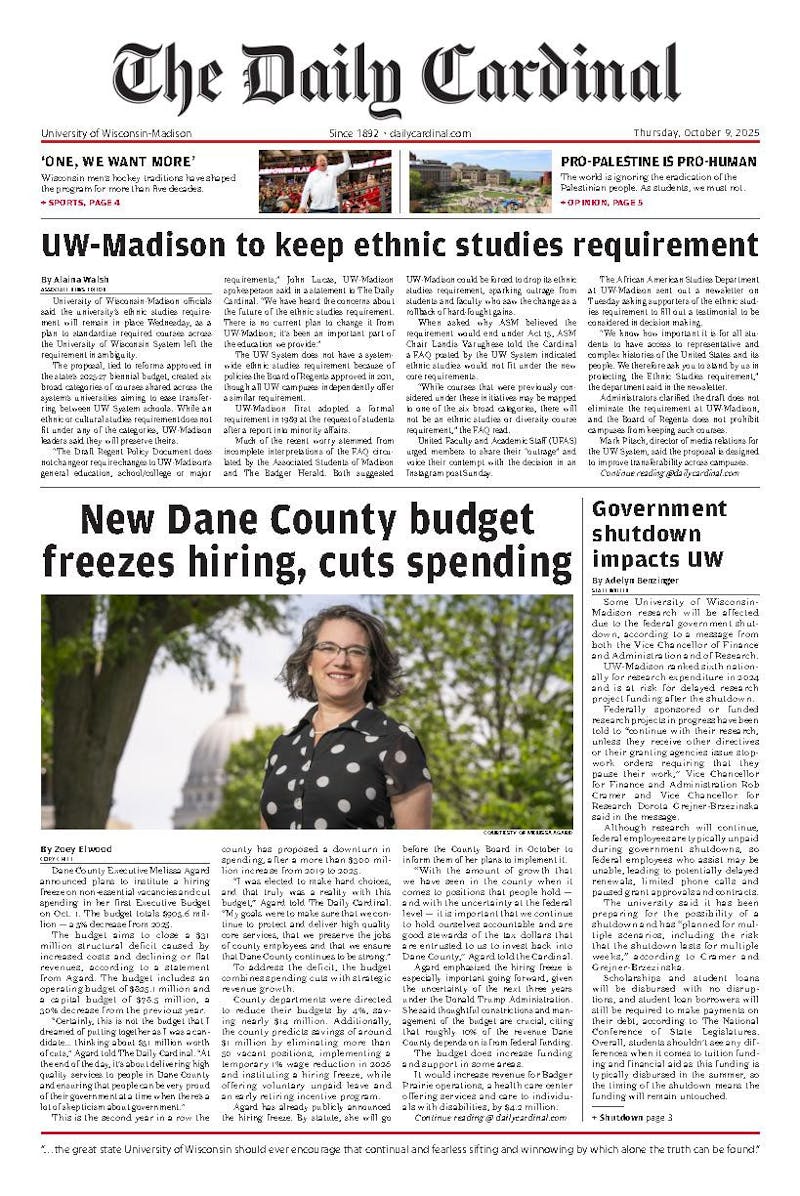Thousands of University of Wisconsin-Madison students and community members attended an Astronomy Club viewing party on Library Mall during the April 8 solar eclipse.
A solar eclipse is when the moon comes between the sun and the Earth, covering the sun. This solar eclipse was unique in its totality, which is when the moon completely covers the sun, according to Astronomy Club observing director Adam Miller.
“[The moon] needs to be the exact size [of the sun] in the sky,” Miller said. “The moon is generally smaller than the sun; because of that, it can only be over a very specific area that the eclipse will actually have an effect.”
Bascom Hill was dotted with lawn chairs and picnic blankets a half-hour before the eclipse began. Library Mall was even more packed, with families, dogs, photographers and college students eagerly awaiting the eclipse.
The Astronomy Club had 1,000 eclipse viewing glasses stocked at their table in the center of Library Mall, Miller said. They quickly ran out.

“We had a line all the way to Memorial Union by 12:10,” Miller said. “We sold out before 12:30.”
One community member gave his eclipse glasses to a group of students who arrived too late to get them from the Astronomy Club. “Bring them back in 20 years!” he said, referring to the next anticipated solar eclipse date.
According to Jenna Karcheski, Astronomy Club president, the next solar eclipse over the United States will happen in 2044, and the next eclipse over Madison will occur in 2099, making this eclipse the most accessible in Madison for at least 75 years.
“I think it's really cool that we’re able to have such a high totality rate even though we aren’t in the line of totality,” eclipse observer Zoe Levine said. “For students, it's a cool opportunity to see it here on campus.”
The Astronomy Club set up six specialty telescopes with custom 3D-printed parts to safely view the eclipse, according to Karcheski. The viewing line was 10 minutes long at one point. Food trucks on Library Mall were also packed.
For some, the eclipse was a defining astrological event that affected energy and everyday life.
According to Lily Bingol, a self-described apprentice astrologer, there have been “chaotic energies” as of late, especially for Libras, due to Mercury being in retrograde. However, Bingol said the solar eclipse served as a balancing force, and things are expected to return to normal.
“Solar eclipses [cause] a lot of emphasis in your life,” Bingol said. “I feel like everyone this past week has felt a lot of intensity. After today, everything is gonna fall into place.”
When asked if she has felt the chaotic energies, Karcheski said “everything’s been super smooth for us,” attributing the club’s success to “proper planning and management.”
Finally, at 2:06 p.m., maximum coverage of the sun occurred at 90% totality. The whole square erupted in applause and cheers. Karcheski demonstrated making a pinhole with your fingers and having the light poking through in a crescent shape like the sun.
“It’s not just the event of the year,” Karcheski said. “It’s the biggest event for decades.”
